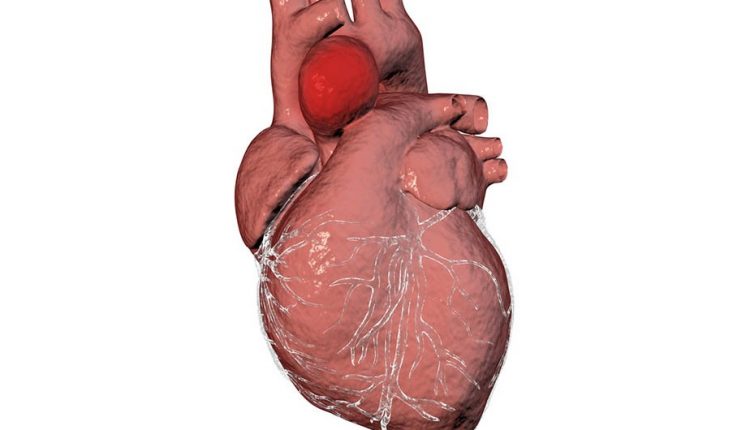
Calcium Score: a coronary calcium test for cardiovascular risk prevention
Calcium Score: prevention through coronary calcium assessment plays a key role in the treatment of heart disease
Ischaemic heart disease (myocardial infarction) is the leading cause of death in Western countries; the quantification of coronary calcium (Calcium Score) can provide valuable information on the health status of the coronary arteries.
Coronary atherosclerotic disease is manifested by the formation of plaques in the vessels (the coronary arteries) that supply the heart with oxygen and nutrients.
Calcium can accumulate within the atheromasic plaques and can be identified using the Calcium Score method
Dozens of scientific studies have shown that the presence of coronary calcium correlates directly with an increased likelihood of myocardial infarction.
In particular, higher coronary calcium levels are associated with an increased risk of ischaemic heart disease.
Compared to the evaluation of traditional cardiovascular risk factors, such as hypertension and hypercholesterolaemia, the quantification of Coronary Calcium represents a powerful marker that offers the advantage of a direct and early diagnosis of atherosclerotic damage in the coronary arteries, which in turn precedes actual ischaemic heart disease.
Identifying patients at increased risk of developing myocardial ischaemia (cardiac infarction) is a real challenge, and the early diagnosis of coronary artery disease, through the use of the Calcium Score, makes effective preventive intervention possible before myocardial infarction occurs.
Coronary Calcium Quantification (Calcium Score): what is it?
Calcium Score is a non-invasive imaging method that involves the use of CT (computed axial tomography) and has the advantage of being performed without the use of contrast medium.
The CT scan, using special cardiology software, is able to accurately quantify the coronary calcium content that tends to accumulate in atherosclerotic plaques within arterial vessels.
The Calcium Score is expressed by a number that correlates directly with the probability of incurring adverse cardiovascular events (e.g. myocardial infarction); a higher number corresponds to a higher cardiovascular risk.
As with all methods that use X-rays (e.g. X-rays, CT scans, coronarography), this method also requires the use of potentially harmful radiation. However, thanks to the continuous development of ever more perfected protocols and technological advances, the amount of radiation to which one is exposed has been significantly reduced and is significantly lower than that of a traditional CT scan of the chest, making this method easy to perform and accessible to the general population.
Calcium Score, who should perform the Coronary Calcium Assessment?
The most recent International Guidelines for Cardiovascular Prevention identify certain precise groups of people who may benefit from Coronary Calcium Score quantification.
In particular, subjects with intermediate cardiovascular risk and diabetic subjects are those in whom precise coronary calcium quantification may be most useful.
The identification of coronary calcium, in fact, especially if the calcium level exceeds a certain threshold, makes it necessary to implement aggressive cardiovascular prevention, such as starting high-dose statin therapy, optimising blood pressure values, strict glycaemic control, all with the aim of reducing the risk of cardiovascular events.
On the other hand, the absence of coronary calcium (Calcium Score = 0) makes the probability of incurring ischaemic cardiovascular events extremely rare in the next 5/10 years.
Read Also
Emergency Live Even More…Live: Download The New Free App Of Your Newspaper For IOS And Android
Head Up Tilt Test, How The Test That Investigates The Causes Of Vagal Syncope Works
Aslanger Pattern: Another OMI?
Electrocardiogram (ECG): What It Is For, When It Is Needed
Coronarography, What Is This Examination?
Instrumental Examinations: What Is The Colour Doppler Echocardiogram?
Heart Attack Symptoms: What To Do In An Emergency, The Role Of CPR
What Is The Difference Between Pacemaker And Subcutaneous Defibrillator?
What Is An Implantable Defibrillator (ICD)?
What Is A Cardioverter? Implantable Defibrillator Overview
Paediatric Pacemaker: Functions And Peculiarities
Cardiac Arrest: Why Is Airway Management Important During CPR?
RSV (Respiratory Syncytial Virus) Surge Serves As Reminder For Proper Airway Management In Children
Supplemental Oxygen: Cylinders And Ventilation Supports In The USA
Heart Disease: What Is Cardiomyopathy?
Inflammations Of The Heart: Myocarditis, Infective Endocarditis And Pericarditis
Heart Murmurs: What It Is And When To Be Concerned
Broken Heart Syndrome Is On The Rise: We Know Takotsubo Cardiomyopathy
Cardiomyopathies: What They Are And What Are The Treatments
Alcoholic And Arrhythmogenic Right Ventricular Cardiomyopathy
Difference Between Spontaneous, Electrical And Pharmacological Cardioversion
What Is Takotsubo Cardiomyopathy (Broken Heart Syndrome)?
Dilated Cardiomyopathy: What It Is, What Causes It And How It Is Treated
Heart Pacemaker: How Does It Work?
Paediatric Implantable Cardioverter Defibrillator (ICD): What Differences And Peculiarities?
Heart Attack, Some Information For Citizens: What Is The Difference With Cardiac Arrest?



